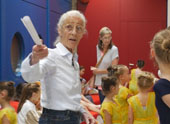PROJECTS
> All Projects
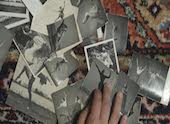
The Art of Movement
The film by the young dancer Boglárka Börcsök looks at a piece of German-Hungarian dance history and studies the movement of the body within the context of political ideologies.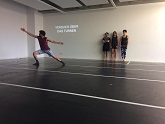
VERSUCH ÜBER DAS TURNEN (ESSAY ON GYMNASTICS)
The artist collective HAUPAKTION dedicated itself to the history of the German gymnastics movement and its choreographic material.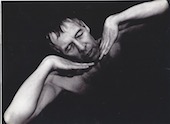
The Complete Expressionist - Musique Concrètre and Modern Dance
Christoph Winkler dedicated his project to the almost forgotten artist Ernest Berk who created unusual hybrids of music and choreography by combining modern dance and musique concrète.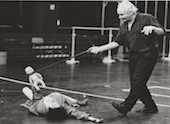
FRIEDENSANLEITUNG FÜR JEDERMANN – THE 3rd GENERATION
Using the staging of Kriegsanleitung für jedermann as her starting point, the choreographer Yoshiko Waki was looking at Johann Kresnik and his importance for German dance history.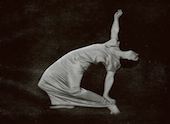
BAUTZNER STRASSE 107, PAST PRESENT FUTURE
Dresden’s independent dance scene is bringing the former Wigman School at Bautzner Straße 107 back to life with a programme including dance works, master classes and Workshops.
Just in Time
Inhabitants in Berlin, Tel Aviv and New York were invited to write letters to dance. The letters were not only be published in a single volume but were also used as material for three participatory choreographies created by deufert&plischke.
Jagd. Kampf. Rausch
For the second time in the TANZFONDS ERBE initiative, Reinhild Hoffmann was passing on one of her choreographies to a new generation of dancers. This time, Staatstheater Braunschweig was restaging her 1991 piece Zeche Eins.
Witch Dance Project
Mary Wigman’s Hexentanz was the starting point for ten commissioned choreographies reinterpreting the work from various perspectives.
H.K. – Quintett
The exceptional dancer Harald Kreutzberg was the inspiration for DanceLab Berlin’s contemporary dance piece as well as for an investigation of Germany’s modern-dance tradition.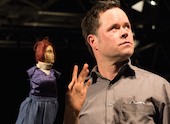
THE DANCER FROM AUSCHWITZ
Theater Nordhausen’s project was dedicated to the Jewish dancer and dance teacher Rosa Glaser who danced for her life in Auschwitz.
Le Sacre du Printemps by Mary Wigman
Henrietta Horn’s reconstruction of Mary Wigman’s 1957 version of The Rite of Spring was enthusiastically received by critics.
The Triadic Ballet
20 years after the death of Gerhard Bohner, and 70 years after the death of Oskar Schlemmer, the Academy of the Arts reconstructed the Bauhaus ballet in co-operation with the Bavarian State Ballet II.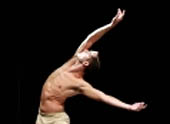
Wind von West (Cantata)
The first part of the three-part Stravinsky evening Frühlingsopfer (Rite of Spring), Wind Von West was reconstructed with dancers from the Folkwang University of the Arts and the Julliard School in New York.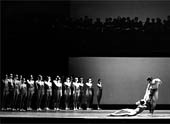
PAX 2013
Leipzig Ballett restaged Uwe Scholz's 1992 choreography Pax Questuosa, which looks at the socio-political situation in the world and in reunified Germany post-Cold War.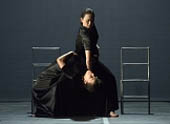
Auch
Reinhild Hoffmann’s 1980 choreography Auch, in which two women dance a duet on a fully equal footing, caused a sensation when first performed. Hoffmann restaged the production at Theater Bielefeld herself.
Tausend Grüsse
Under the direction of Steffen Fuchs, Ballett Koblenz restaged two choreographies by Uwe Scholz – Dans la Marche and Die 1000 Grüße. Fuchs rounded off the evening with a homage to Scholz.
Loops and Lines
The ballet company of the Hessian State Theatre of Wiesbaden, in co-operation with Ensemble Modern, demonstrated the importance of Laban’s Movement Study for dance today.
HEUTE: volkstanzen
Four choreographers investigated parallels between folk dance and popular contemporary dances. A major folk-dance festival invited participants to dance and reflect on the theme.
Der Schrank der Georgi (GEORGI’S WARDROBE)
Yvonne Georgi was one of the most important expressionist dance choreographers. Ricardo Fernando and his ensemble used a recording to reconstruct her choreography Glück, Tod und Traum.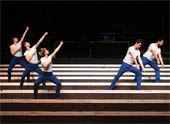
Revolution won't be performed
Using the Communist choreographer Jean Weidt as its staring point, the project took a critical look at the most recent revolutions in Europe.
Tracing Isadora
The ballet company of the Nationaltheater Mannheim dedicated itself to Isadora Duncan, a pioneer of modern dance. A series of events was developed based on Duncan’s 1907 performance in the city.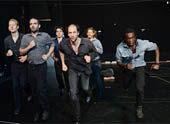
Ruhr-Ort
In 1991, Susanne Linke created a choreography based on the work of men in steel factories and coalmines. In 2014, she restaged the piece with dancers from the Renegade ensemble.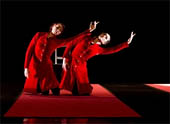
The Horta Project – SOAP Recreation
In the 1990s, dance in the German state of Hesse and the country as a whole was heavily influenced by Rui Horta and his company SOAP. Tanzcompagnie Gießen restaged two of Horta’s works with Horta himself as director.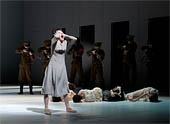
Anastasia/Shadow
The ballet company of the Saarland State Theatre reconstructed Anastasia by Sir Kenneth MacMillan and contrasted it with a new piece, Shadow.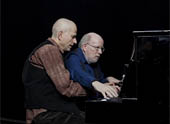
Piano Men
The focus of Paula Rosolen’s piece was on the pianists who accompany dance rehearsals as co-répétiteurs and are living dance archives in themselves.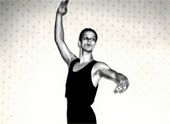
Abendliche Tänze
Christoph Winkler looked at a specific form of memory that is contained in the choreographic practice itself. At the same time, he took a critical look at how history is understood in dance today.
The Body as Archive
Can dancers' bodies be archives? In his documentary The Body as Archive, the filmmaker Michael Maurissens goes in search of the answer, focusing on dancers as the preservers of choreographic knowledge.
ZWEI GIRAFFEN TANZEN TANGO - BREMER SCHRITTE
Choreographer Helge Letonja was looking at Gerhard Bohner’s 1980 choreography Zwei Giraffen tanzen Tango.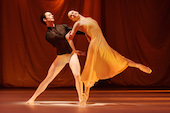
Im Fluss der Zeit / In the Flow of Time
The ballet company at Staatstheater Cottbus restaged two of Uwe Scholz’s choreographies for the three-part ballet evening Im Fluss der Zeit.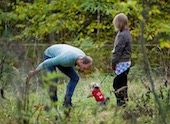
TIERFORME/L/N
The Berlin-based choreographer Martin Nachbar reproduced Simone Forti’s piece Sleep Walkers (aka Zoo Mantras). An extensive supplementary programme also provided a methodical and historical foundation for the current examination of the relationship between humans and animals.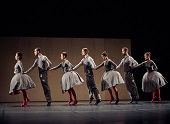
PAST FORWARD
PAST FORWARD Theater Bielefeld reproduced Gerhard Bohner’s choreography Angst und Geometrie (Fear and Geometry) and brought it together in an artistic dialogue with three new creations.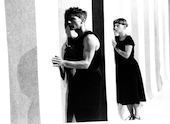
SOS _ GERHARD BOHNER _ Tanzcompagnie Rubato
Jutta Hell and Dieter Baumann were passing on Bohner’s later work, which the choreographer developed with them in 1991, to a younger generation of dancers.
KARIN WAEHNER (1926-1999) – EIGENSINNIG IN ZWISCHENRÄUMEN (Wilful in Spaces)
The project was dedicated to the former Wigman student Karin Waehner, a pioneer of modern dance in France.
AFECTOS HUMANOS BY DORE HOYER
The Berlin-based dancer Nils Freyer reproduced Dore Hoyer's dance cycle and presented it in a double-bill evening with Marianne Vogelsang's Bach Preludes.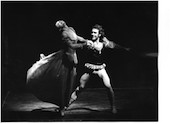
Die Folterungen der Beatrice Cenci
The ballet company at Saarländisches Staatstheater is reconstructing Gerhard Bohner’s 1971 work The Tortures of Beatrice Cenci, described by the FAZ newspaper as “Germany’s most successful post-war ballet”.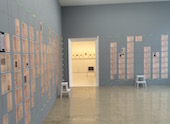
Depot Erbe
Theater Freiburg was creating research space at the Museum for New Art where artists and members of the public were investigating the future of cultural heritage.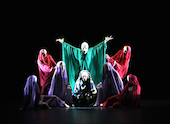
RECONSTRUCTIONS OF MARY WIGMAN’S TOTENTÄNZE (DANCES OF DEATH)
Städtische Bühnen Osnabrück reconstructed Mary Wigman’s Totentänze I and II, and used exhibitions, installations and symposia to look at the death-dance theme.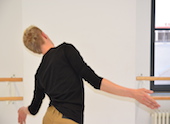
FIVE PRELUDES BY MARIANNE VOGELSANG FROM J.S. BACH’S WELL-TEMPERED CLAVIER
Berlin dancer Nils Freyer was learning the final work by one of the pioneers of German Expressionist Dance.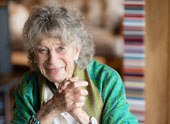
City Dance Cologne
With City Dance Cologne, the choreographer Stephanie Thiersch brought Anna Halprin’s 1970s Walk Performances to Germany
undo, redo and repeat
Choreographers Christina Ciupke and Anna Till looked at how information about past dances by Mary Wigman, Kurt Jooss, Dore Hoyer, Pina Bausch and William Forsythe has reached us today.
Anita Berber – Retro/Perspective
Scandal is the reason most people know about this 1920s dance icon, but Anita Berber was also an international star with great ability. This festival by and with MS Schrittmacher was dedicated to Berber as a dancer.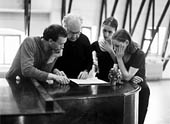
DÉBORDS. Reflections on the Green Table
Olga de Soto’s award-winning documentary/choreographic research showed how Kurt Jooss’s anti-war piece Der Grüne Tisch (The Green Table) enthused and influenced people around the world.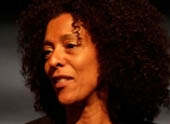
The Live Legacy Project
Angela Guerreiro investigated the connections between German contemporary dance and the Judson Dance Theatre in New York. Dancers, choreographers, students, teachers and experts came together for the six-day symposium.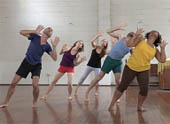
The Source Code
Jochen Roller’s online-project is dedicated to the choreographer Gertrud Bodenwieser who emigrated to Australia in 1938. It features reconstructions, archive material and reports by contemporary witnesses.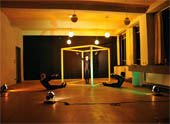
Dancing Bauhaus
Oskar Schlemmer’s Bauhaus Dances – created from 1926 to 1929 – were re-interpreted with students from the Anhaltisches Theater Dessau and the Inter-university Center for Dance (HZT) Berlin.
Julius Hans Spiegel Centre
How has colonialism influenced German dance? Work with choreographers from three continents produced formats and performances that continued and rewrote this forgotten chapter of German dance history.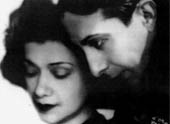
SACHAROFF RESEARCH PROJECT
Stella Tinbergen’s documentary film Poets of Dance reveals the life and works of the famous dance couple Clotilde and Alexander Sacharoff and includes a reconstruction of their dances.
The Memory Machine
MOUVOIR’s walk-in installation The Memory Machine used contemporary witness reports to bring dance history between 1980 and 2000, a period marked by new concepts and styles, to life.![Thumbnail No [’rait] of spring](https://tanzfonds.de/en/wp-content/uploads/sites/3/2015/08/no-rait-of-spring_thumb.jpg)
No [’rait] of spring
Based on his own experience as a dancer in Pina Bausch’s Le Sacre du Printemps, Josep Caballero García looked at five key female roles in German dance history from the perspective of male dancers.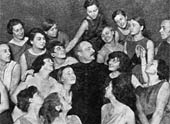
DANCE OF ALL – A MOVEMENT CHOIR
For the Tanz Aller project, the artist group Ligna used the radio-ballet concept to revive the political movement choirs of the 1920s with members of the public.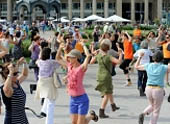
TANZLOKAL – Tanzfest Stuttgart
The TANZLOKAL – Tanzfest Stuttgart event paid homage to Baden-Württemberg’s contribution to German Expressionist Dance in the 1920s and 1950s.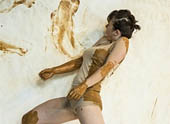
MONTE VERITÀ – INTERPRETATIONS OF SPACE
Juliette Villemin investigated the search for new terms of reference between the body and space in modern dance at the beginning of the 20th century.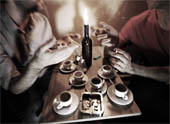
I love my dancers
Uri Turkenich looked at Pina Bausch’s work from 1977 and 1978 in a staged interview with the former Tanztheater Wuppertal dancer Geraldo Si.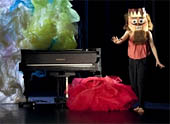
Nussknacker
Working with her eight dancers, the composer Sven Kacirek and a ‘chor de ballet’, Antje Pfundtner devoted herself to the images inherent in The Nutcracker, one of the most famous works in Western dance history.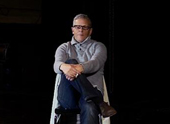
Transforming Acts
An installation that brought together images of key works by 12 20th century choreographers and directors as well as archive material and video portraits.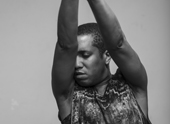
CAEN AMOUR
Trajal Harrell’s choreographic performance CAEN AMOUR was dedicated to the American dance icon Loïe Fuller and her impact on contemporary notions of the body.
THE LEGEND OF SYD O’NOO
The tap dancer and choreographer Sebastian Weber worked with the author and director Stéphane Bittoun to look at how tap, as an improvised dance form, deals with its own artistic heritage.

